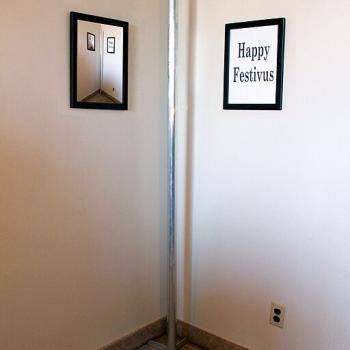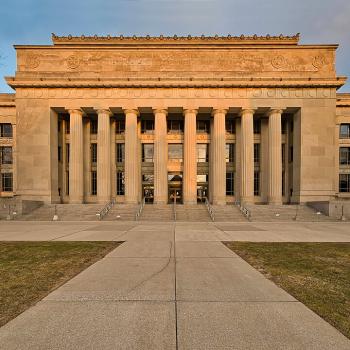After a painful and exhausting year that found Asian Americans reeling from a surge in anti-Asian racism and violence, the arrival of Season Two of Mindy Kaling’s acclaimed comedy Never Have I Ever was a long-anticipated moment of joy. Especially for Asian American women, who have experienced the lion’s share of anti-Asian attacks during the Covid-19 pandemic, the opportunity to watch a television show created by Asian American women and about Asian American women was a moment to celebrate. Not only are we being seen, but we are telling our own stories, as we choose to tell them.
The word “stories” is plural because–wow–there are a lot of stories in Season Two, which overflows with new characters, conflicts, and cringe-worthy moments. And that’s exactly the point. As Deepa Shivaram wrote in NPR:
“The significance of Never Have I Ever…is that it doesn’t just bring Asian Americans to the forefront. The show quietly smashes perceived stereotypes by simply allowing its characters to be fully human. And it gives Devi and others the space to be what Asian Americans are often denied on screen: the chance to be in charge of their own narrative, as complicated as they want.”
The show does more than portray Asian American individuals as rich and complicated and fully human. By including complex characters of different backgrounds and experiences, Never Have I Ever makes a statement about Asian America as a whole: that Asian Americans are incredibly diverse, and that there is not just one Asian American experience, but many. Within the broad category of “Asian American” is a great mosaic of stories.
Just as we did last summer, three scholars of Asian American history, religion, and media gathered together to offer some reflections on Season Two of Never Have I Ever and the different stories it told. We each addressed different themes: I discussed the show’s depiction of Asian American religious life, Dr. Himanee Gupta-Carlson examined the intersection of patriarchy and model minority myth, and Dr. Swapnil Rai reflected on the experiences of Indian American families living in between cultures.
Gentle warning: we include some spoilers here, so you might want to watch Season Two in full before proceeding with this roundtable.
https://www.youtube.com/watch?v=FakCjoNnxik
“A Halal Moment of Rebellion”: Religious Diversity on Never Have I Ever
Dr. Melissa Borja, Assistant Professor at the University of Michigan
Last year, when the first season of Never Have I Ever was released, I was immediately intrigued by the show’s representation of Asian American religious life. The opening scene of the first episode featured an earnest Devi positioned before an altar in her bedroom. “Hey Gods!” she said. “Its Devi Vishwakumar, your favorite Hindu girl in the San Fernando Valley. What’s a-poppin’?” It was one of several moments throughout the season when the show depicted the Hindu practices of Devi and her family–an effort that was, as Dr. Rupa Pillai observed in last summer’s roundtable, an “attempt to demystify Hinduism to the mainstream American viewer.”
But there was a problem with Season One’s portrayal of Indian American life. “The centering of Hinduism in our introduction to Devi…is less about exploring her relationship with faith and more about exhibiting how our collective (mis)understanding of Indian culture in the United States is reduced to Hinduism,” wrote Pillai. “…Although the series does briefly point out that India is a country of many religions, ultimately to be Indian in Never Have I Ever is to be Hindu.” Centering the experience of upper-caste, middle-class, model minority Hindu Americans is dangerous, Pillai argued, because it “promotes Islamophobia, casteism, and patriarchy.”
Season Two of Never Have I Ever presents a new set of stories, populated by a new set of characters who offer a more complex depiction of Asian American religious life. This time around, the show illuminates the religious diversity that exists not only in America, but within Asian America and within Indian America in particular. In so doing, the show highlights an important but often overlooked fact: that Asian Americans are an extremely religiously diverse–arguably the most religiously diverse–racial group in the U.S.
In Season Two, the most significant addition to the cast of Never Have I Ever is Aneesa, a Muslim teenager who becomes Devi’s Indian American frenemy. Aneesa complicates several common narratives. For one, she’s both Muslim and Indian American. Importantly, Aneesa’s Indian-ness is never in question, and she’s so good at being a proper Indian girl (as revealed by her polite way of greeting Devi’s family) that Devi feels threatened. If the first season received criticism for centering the Indian American story on Hindus, the second season goes in a different direction and, through Aneesa, depicts a more religiously diverse Indian America, one that includes Muslims as model community members.
Aneesa not only upends Hindu-centric narratives about Indian Americans but also challenges stereotypes of Muslims, especially Muslim women. Muslim women have long been unfairly perceived as and portrayed to be quiet and subservient. (Take, for example, Donald Trump’s comments about Ghazala Khan not being “allowed” to speak at the 2016 Democratic National Convention.) But Aneesa is anything but quiet and subservient. To the contrary, she’s outspoken and outgoing, as well as athletic, intelligent, pretty, and popular. In sum, she’s cool.
Her coolness is central to how the show portrays her experiences as a Muslim teenage girl. Faced with potentially embarrassing or perilous moments, she reveals an admirable self-assurance, which comes in handy when she faces various challenges as a Muslim teen. When she’s introduced to Devi’s history class and the teacher awkwardly displays his eagerness to respect her religious needs (“I insist that you pray in my class anytime you need to!” he says), Aneesa responds to the attention paid to her being Muslim with a gracious and confident comment. Her self-confidence and wit are further on display later in the same episode, when Devi’s mother discovers that Devi and her friends had snuck out to get Devi a nose ring. Aneesa calms Devi’s mother and describes the decision to get a nose ring as “a halal moment of rebellion.” (Eleanor, in turn, offers her support and agrees that a nose ring is “halal as hell.”)
Through Aneesa, we see a more nuanced story about religious diversity in America. The familiar concerns of religious pluralism–accommodating requests for places to pray, for instance–aren’t necessarily top of mind to Muslim teenage girls, whose experiences of contending with Islamophobia and being a religious minority intersect with the everyday challenges of coming of age in America. Aneesa finds herself struggling with the pain of not fitting in (which owes in part to her mother’s expectation that she dress modestly and cover up her body), the desire to be popular (which leads her to hang out with a group of mean girls at her former school), and the pressure to gain social approval by being thin (which gives rise to an eating disorder). She even reveals how her interest in pop culture was sometimes at odds with the piety of her religious parents. (“I recently had to convince my mom that I’m not forsaking my religion because I tweeted, ‘Harry Styles is my god,’” she confesses to Devi.)
The move to include a Muslim character in Season Two matters for several reasons. First, it continues to bring in religion as an important (if often forgotten) aspect of diversity in the U.S. in general and within Asian America in particular. Second, it complicates who is visible as Asian American and, in particular, as Indian American. It upends stereotypical portrayals of Muslims, especially Muslim women. Finally, it shows how the challenges associated with being Muslim in America might take distinctive form in the lives of teenage girls. These struggles, like the human beings who experience them, are too often not taken seriously enough. It’s time for us to pay attention.
Embedding and Up-ending the Model Minority Stereotype
Dr. Himanee Gupta-Carlson, Associate Professor at Empire State College
Watching Season Two of Never Have I Ever allowed me an indulgence in guilty pleasure. For one week of binge-watching the series late at night, I escaped worries about anti-Asian violence amid the still prevalent global Covid 19 pandemic. Season Two picks up where Season One ended, with the main character — Indian American teenager Devi Vishwakumar — passionately making out with ultra-rich Ben while good-looking heartthrob Paxton is texting her, asking her out.
No pandemic is raging. Anti-Asian hate crimes are not in the news. And despite the fact that she shares the name of Devi and her cousin Kamala, the new position of Kamala Harris as vice president is not part of the series’ California teen scene. So, how might we use this season to gut-check the place of Asians in American life? The series’ subtle use of the model minority stereotype offers one means of doing so.
The model minority has been deployed since the 1960s as a means of keeping Asians in their place. It renders them hard-working, docile bodies within the white-dominant political economy of the U.S. and allows for a re-positioning of them as sub-human perpetual foreigners if they take on too much power for themselves. Dismantling the stereotype is about dislodging white supremacy itself.
In early episodes, the model minority asserts clear control over Devi, her new friend Aneesa, and her cousin Kamala. White supremacy and patriarchy establish the norms in the school crowd, with Devi described as an “academic powerhouse” by a school counselor and “invisible” in analytics run by her robotics-expert friend Fabiola. The stereotype shows its damaging effects when Aneesa joins Devi’s class as a transfer student. The whites in the crowd either cannot tell the difference between her and Devi (all Indians look alike) or decide Aneesa is fun and pretty (docile) while Devi is crazy (the dangerous perpetual foreigner). Further damage is revealed through the subjugation of Kamala in her all-male graduate school lab, where her white male director relegates her to washing beakers and continually mispronounces her name, calling up media conversations from summer 2020 over how to pronounce vice-presidential candidate Harris’s name right. Kamala of Never Have I Ever gets little help from her fiance Prashant, a good-looking and economically successful model minority story himself. As she describes her frustrations to him, he urges her to keep quiet and play the game.
The damage of the stereotype is felt also by Devi’s mother Nalini who is applauded in America for her successes as a dermatologist but questioned by family in India for her desire to continue to work if she carries out her plan to return to her home country. As Nalini decides to remain in America, we feel the full breadth of her loneliness as she confides her difficulties of widowhood to Noor, Aneesa’s mother. Though the two mothers differ in religious affiliation, they bond in a shared desire for friendship with other Indians, a source for them of comfort as immigrants in a white dominant world.
Midway through the season, however, a breakthrough occurs. Many of the Asian American characters reject the debilitating definition of the stereotype and assert themselves — as Asian American activists and others did in the wake of the March 2021 shootings at an Atlanta spa that left eight people dead, six of them Asian women — as individuals on their own terms. Paxton discovers through his Japanese grandfather and partly through some tough talk from Devi that if he does work hard, he can be more than a good-looking jock and succeed academically. In doing so, he evolves into a (boy)friend who is defined by more than physique, and we see him by the end of the show as the kind of male partner who would satisfy Devi both intellectually and physically. We also see ultimately in Devi’s sheer incapability to succeed as a model minority a stronger feminist-like “anti-model minority model” that can show us all how to better stand up for ourselves. This anti-model minority model proves helpful for Kamala, as she demands credit for work she has done and appears to be ditching Prashant in the season’s closing scenes for a more independent life.
Meanwhile, Black women — and one man — play a quiet, almost behind-the-scenes role of anti-racist support. In Season Two, we see them as we saw them in Season One, as disciplinarians, therapists, counselors, and path-breakers toward racial justice. They remind us that even as non-whites must deal with white supremacy on multiple levels they have not experienced the oppression that Blacks did, and that perhaps as we can look to Black Lives Matter and other anti-racism movements as a spiritual path out of white supremacy and toward a more just society.
Did Kaling have these ideas in mind as she crafted her script? Perhaps not. But the tensions of real life do tend to embed themselves into the scripts of popular culture. If Asian American Studies scholar Russell Jeung is correct in calling the renewed activism among Asian Americans the end of allowing the model minority to persist, I look forward to further such unveilings in future seasons.
What’s In a Name?: The In-Between World of the South Asian Diaspora in Never Have I Ever”
Dr. Swapnil Rai, Assistant Professor at the University of Michigan
“I am asking for basic respect when I want people to say my name right”
– Maitreyi Ramakrishnan, teen actor who plays Devi on Never Have I Ever, in an interview with Seventeen magazine
Maitreyi Ramakrishan’s statement about her name in many ways epitomises the in-betweenness of the South Asian diaspora in the U.S. As a mom of an elementary schooler also named Maitreyi, I find that this particular problem has a deep resonance. The story of Maitreyi’s name opened up to me a metacognition of the “in-betweenness” of the south Asian diasporic identity. In every context outside the home, I need to explain the pronunciation of my daughter’s name in great detail to the point that she and I now share a well rehearsed understanding about how we will pronounce her name for the Indian/desi audience versus the non-Indians.
Unlike some immigrant groups in the U.S. that are okay with adopting a new English name, South Asians refrain from this. We are attached to our names because they are imbued with deep cultural and personal meaning. Indian Hindu families often have naming ceremonies that involve family elders. In Hinduism namkaran is a samskara, because a child’s name is seen as somehow existentially connected with who the child will be, and what qualities they will embody. So, we love our names until we encounter new cultural spaces where these names are unfamiliar and difficult to pronounce, marking us as outsiders even before an actual encounter. It therefore doesn’t matter if Devi (the word for Goddess in Sanskrit) or Aneesa ( Faithful and Friendly in Arabic) are second generation Indian-Americans, their non-anglophone names already signal their “in-between” biculturalism. The beauty of Kaling’s Never Have I Ever lies in the way she establishes this nuanced bi-cultural Americanness.
Through her all-American desi teens Devi and Aneesa as well as through Nalini, Kamala and Devi’s recently emigrated grandmother, Kaling establishes a south Asian world where the experience of America is generationally diverse. Nalini and Kamala are first generation immigrants who find themselves in the throes of American culture and feel drawn to it, yet establish an arms length relationship with “American-ness.” Their embodied “in-betweenness” vacillates between two cultures, India and America. So, Kamala, a bright Ph.D. student and scientist tries to fit in the “geek” U.S. culture of her lab but is still relegated to the gendered space of an outsider because despite her desperate attempts to join her labmates outside hours she is way too Indian to enjoy cosplay. At the same time, Kamala isn’t Indian enough to make peace with the idea of an arranged marriage even though she likes Prashant, the eligible bachelor her family has picked for her. Both Nalini and Kamala oscillate between their adopted homeland and a nostalgic association with the home they left behind. Or as Nirmala succinctly points out to Nalini, “I love having you here [in India] but you are too westernized now,” dashing Nalini’s hopes of moving back to India with Devi. In America, however, Nalini is too Eastern to learn to embrace western individuality and freedom and hankers for family support. Her claim to an American identity is cinereal and often feels unmoored, capable only of in-between, fractured perceptions of identity and belonging. Devi, on the other hand, proclaims and owns her quintessential American teen identity in declaring that she takes life advice only from Megan Thee Stallion and gets a nose piercing. Aneesa approves of Devi’s act as a “Halal moment of rebellion.” In this encounter and multiple others like the grandmother picking fruits from the neighbor’s yard without permission, Kaling constructs a south Asian diasporic in-betweenness that is nuanced and reveals the complexities of intergenerational south Asian diasporic identity in the U.S.















